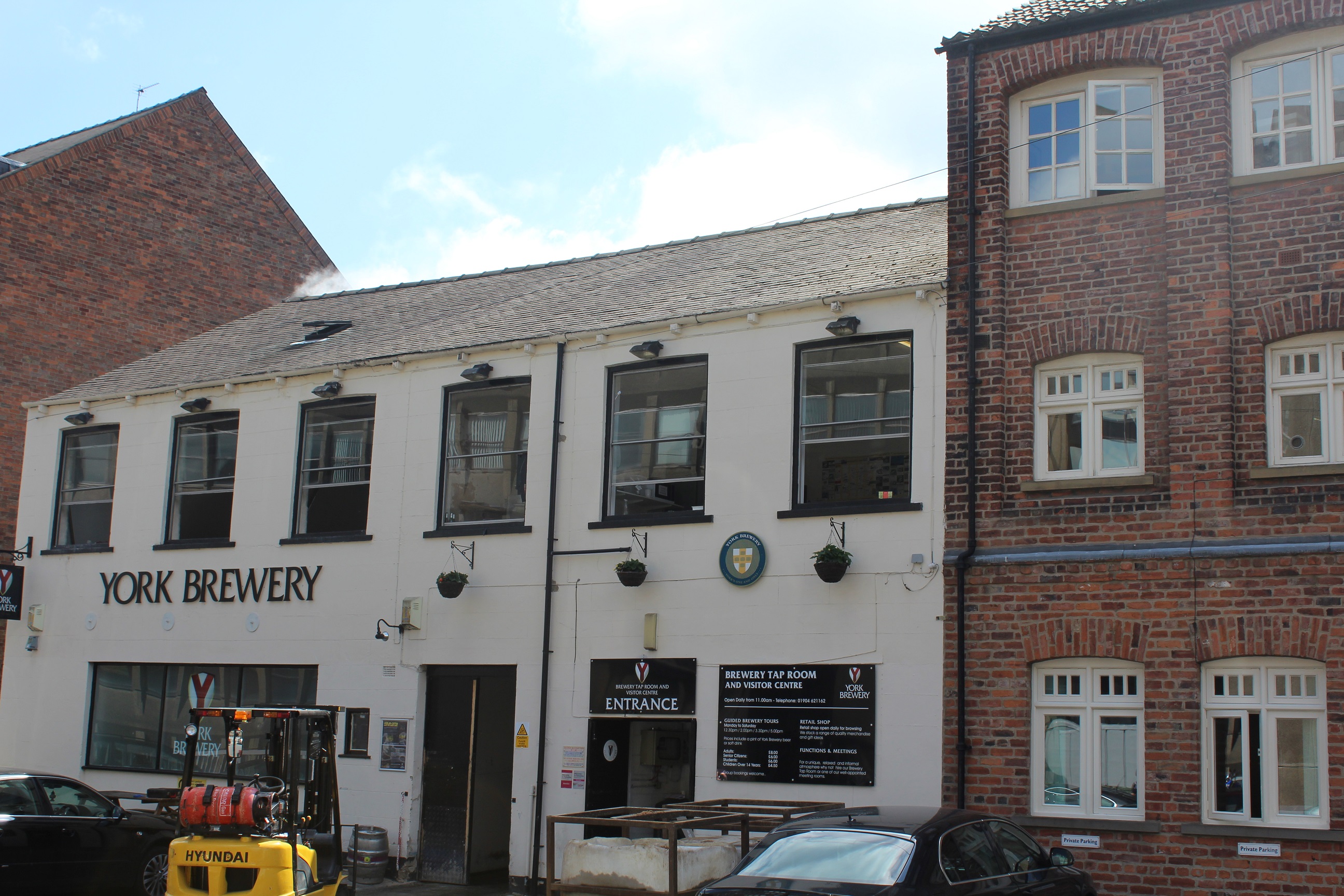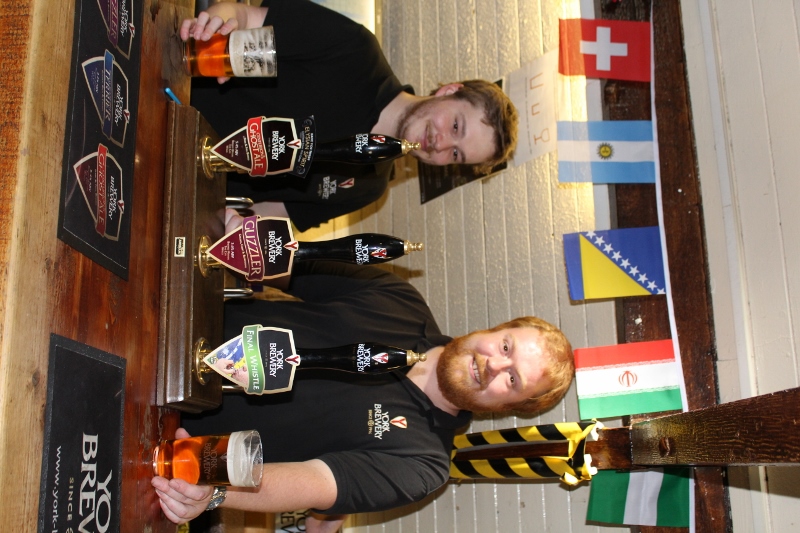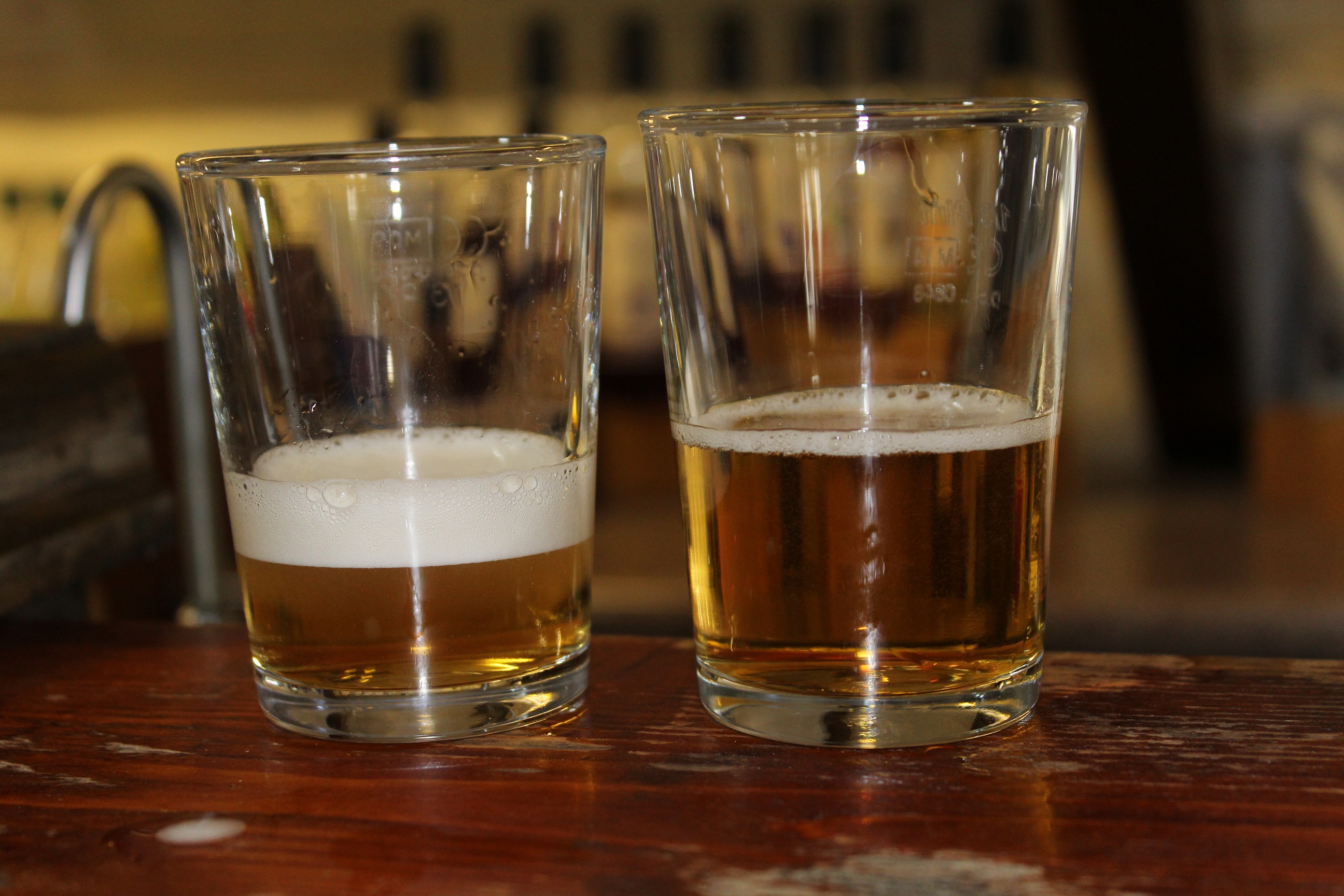
York Brewery
 A brewery tour is not really something a beer writer gets particularly excited about. After the fifth or sixth time you’ve joined the quiet and patiently waiting group and traipsed off to the Visitor’s Centre to hear all about the ingredients and process of beer making it gets a bit ‘familiar’ and, quite frankly, a little old.
A brewery tour is not really something a beer writer gets particularly excited about. After the fifth or sixth time you’ve joined the quiet and patiently waiting group and traipsed off to the Visitor’s Centre to hear all about the ingredients and process of beer making it gets a bit ‘familiar’ and, quite frankly, a little old.
Spending a couple of days in York, however, gave me my first opportunity to actually learn something of the brewer’s art with which I was spectacularly ‘unfamiliar’ – Cask Ale. Real Ale, Cask Ale, Keg Ale – all descriptors I’d heard used and had a vague understanding of but whose production I could not say I was across. Mashing, sparging, boiling, hopping and fermenting I figured worked along the same lines as lager brewing or conventional ale brewing as I knew it but where did it differ?
Gordon, a tall, affable ginger-bearded local was my guide and his tour differed from many others I’d taken right from the start. This guy didn’t sound as though he was ‘reading from the script’. He had a genuine passion for the caper and spoke knowledgably and casually about the ingredients, the brewery’s history and the craft of brewing Cask Ale. He was also one of the senior brewers and not just an employee with a gift of the gab and a corporate script.
Founded in 1996 by a ‘pair of Tonys’ (not a Yorkshire euphemism) but since bought out by Mitchell’s of Lancaster, the York Brewery is the only brewery within the city walls and the first since the 1970s. Producing three core beers, a monthly special and various seasonals and experimentals it packages into 9 gallon (72 pints) and 18 gallon casks while some brews are bottled off-site using a tanker which sits on the road out front for up to four hours while filling takes place. The brewery has three pubs within York’s walls and another in Leeds to the south. They often arrange ‘guest tap swaps’ with other local brewers as well.
Using primarily Pearl Malt, some Crystal and a ‘torrefied’ wheat malt to aid head retention, York Brewery keeps the base recipes fairly simple and similar and then uses the hopping regime to produce different ‘personalities’ within the beer. As our tour began I couldn’t help but notice the absence of a malt hopper, auger or mill- York Brewery uses only pre-ground malt in all their beers. A keen eye is kept on production and delivery to ensure that the malt has not aged too much before it’s needed.
If there is one thing that, in my experiences, separates the ‘North’ and the ‘South’ more than any other aspect, it is probably the smallest item in the brewery…
The Sparkler
This is a small metal accessory which seems to have caused debate greatly disproportionate to its size and weight. It fits onto the end of the nozzle on the handpump and looks a bit like a miniature locknut from a 64 to 79 model Holden.
The little I knew about this tiny attachment I had learned second-hand from ex-pat Brits back home and from online forum ‘discussions’ and the sum total of this knowledge I shall now transcribe onto the back of a beer coaster for your information;
- It has little holes in it
- It ‘squirts’ the beer
- They only use them ‘up north’
- It makes beer go flat quicker
- It doesn’t make beer go flat quicker
- It adds head to the beer which is a ‘rip-off’.
- That’s about it
It took Tom (our barman and yet another affable and knowledgeable lad) all of eight seconds to teach me more about this tiny piece of low-tech beer-dispensing engineering than I had ‘learned’ in the previous eight years. The sparkler, rather than a device for easily identifying a pub’s general geographical co-ordinates, has a very real purpose. By dispersing the dissolved CO2 trapped in the beer it ‘invigorates’ the beer, creates a dense surface area of foam into which aroma can be captured and, in accordance with the ‘Law of Unintended Consequences’, reduces spillage between bar and table.
The eight seconds within which Tom delivered this ‘lesson’ was used to pour these two draughts of Final Whistle, a seasonal brewed for the World Cup (which, apparently is quite popular over here in England. Unless they get beaten.) As the picture illustrates, one ale is lively and inviting and the other is as flat as a shit-carter’s hat. Even in such small examples, the difference in aroma, flavour, mouthfeel and texture was remarkable.
I am a convert to the sparkler.
As to Cask Ale? I can’t say that I am converted although there really is something very special about drinking real ale under the watchful eye of the blokes who brewed it, were brought up on it, are its most evangelical advocates, all while sitting in the pub of the brewery in the heartland of Real Ale.
Maybe if you are brought up on ‘fizzy’ beer – whether lightly spritzy or commercially force-injected and bloating – you just become a little dependent upon that familiar mouthfeel and the thirst-quenching nature of bubbles. But, if you’re going to dip your toe into more languidly gentle foreshore of natural cask conditioning, The York Brewery is a pretty good place to start.





